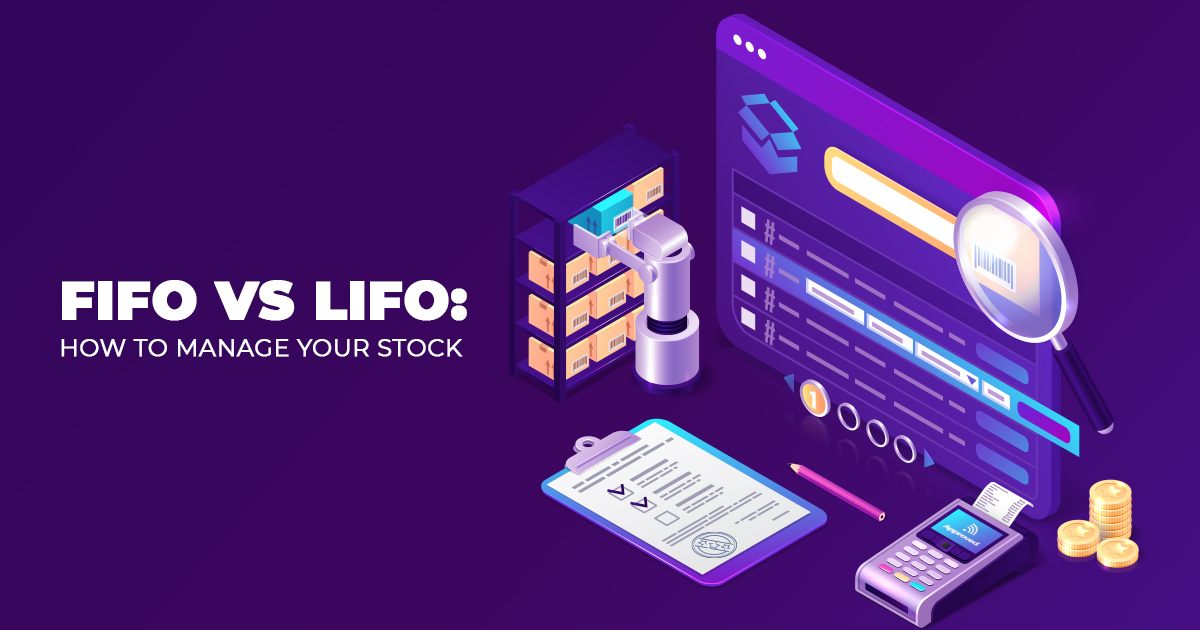
Many businesses now choose online inventory management systems over manual systems. In inventory management, there’s the FIFO method and the LIFO method. Have you already figured out which method to use to manage your stock? Let us briefly discuss FIFO vs LIFO to help you decide!
FIFO vs LIFO
The FIFO method, also known as “first in, first out”, is an inventory management method that seeks to sell older products first. In doing so, the store or business reduces the probability of losing more finances when their goods expire or become obsolete.
On the other hand, the LIFO method or “last in, first out” does the opposite. The store or business sells the most recent products first in this method. You should, however, take note that LIFO applies to non-perishable goods.
So, whichever accounting method you decide to implement in your business, know that it will impact your logistics, income, profitability, and taxes.
FIFO (“First In, First Out”)
The FIFO method follows the general principle that the first item or product purchased and finds its way into inventory should be the first one sold. Aside from that, the method also ensures that older products—especially those with the nearest expiration dates—get sold first before they expire. As a result, the business can reduce losses due to inventory waste or spoilage.
As such, businesses that use the FIFO method are considered more profitable. A typical example of companies that follow the FIFO method includes those that sell perishable goods.
LIFO (“Last In, First Out”)
Unlike FIFO, the LIFO method follows the general principle of selling first the last item or product purchased and added into the inventory. As a result, the first item purchased gets left by the end of the accounting period. This method can be pretty unrealistic because businesses would never leave their older inventory waiting idly in their warehouses.
Businesses that sell non-perishable items or commodities, such as metals, chemicals, or petroleum, prefer to use the LIFO method.
Key Differences Between FIFO and LIFO
Inventory Valuation
For this section, we will be using an example from NerdWallet.
Let us say that you own a craft supply store for beading materials. Your stock would not expire before they get sold, so we can either use the FIFO method or the LIFO method of inventory valuation.
So, let us say that, for the past six months, you have purchased a total of 140 spools of wire. But, after conducting inventory, you found out that you have sold out 120 spools during the same period of six months.
You kept your selling price at Php 7.00 per spool of wire, regardless of how much you paid for them. Your first purchase is at Php 4.00 (120 spools) and your second purchase is at Php 5.00 (20 spools).
Let’s start using the FIFO Inventory Valuation:
Because you kept your selling price at Php 7 per spool of wire and sold a total of 120 spools, you get a gross revenue of Php 840.00 (Php 7.00 x 120 spools). So, now, let us figure out your profit.
Using the FIFO method of inventory valuation, we need to assume that you sold your oldest spools of wire first. Therefore, your costs are as follows:
You purchased 140 spools of wire and sold only 120. Thus, it does not include the remaining 20 you most recently purchased (Purchase 2). Therefore, by following the FIFO principle, we can say that the last spools you bought are still in your inventory.
So, you can calculate your profit for the past six months like this:
Gross Revenue – Cost of Goods Sold = Gross Profit
Php 840.00 – Php 480.00 = Php 360.00
Therefore, your profit for the spools of wire is Php 360.00.
Now, let us do this following the LIFO inventory valuation:
If we use the LIFO inventory valuation method, your gross revenue would still be at Php 840.00. However, it will be your profit that will slightly differ.
Following the LIFO method, you can calculate your profit for the past six months like this:
Gross Revenue – Cost of Goods Sold = Gross Profit
Php 840.00 – Php 500.00 = Php 340.00
Thus, your profit for the spools of wire is Php 340.00. That is Php 20.00 less than how much you got while using the FIFO method.
FIFO vs LIFO: What Now?
You now know the essential differences between the FIFO and LIFO inventory methods. We hope you can now determine which inventory method to use for your business.
If you have more questions about FIFO vs LIFO, please don’t hesitate to contact us. Let us provide you with your online inventory management system needs!
